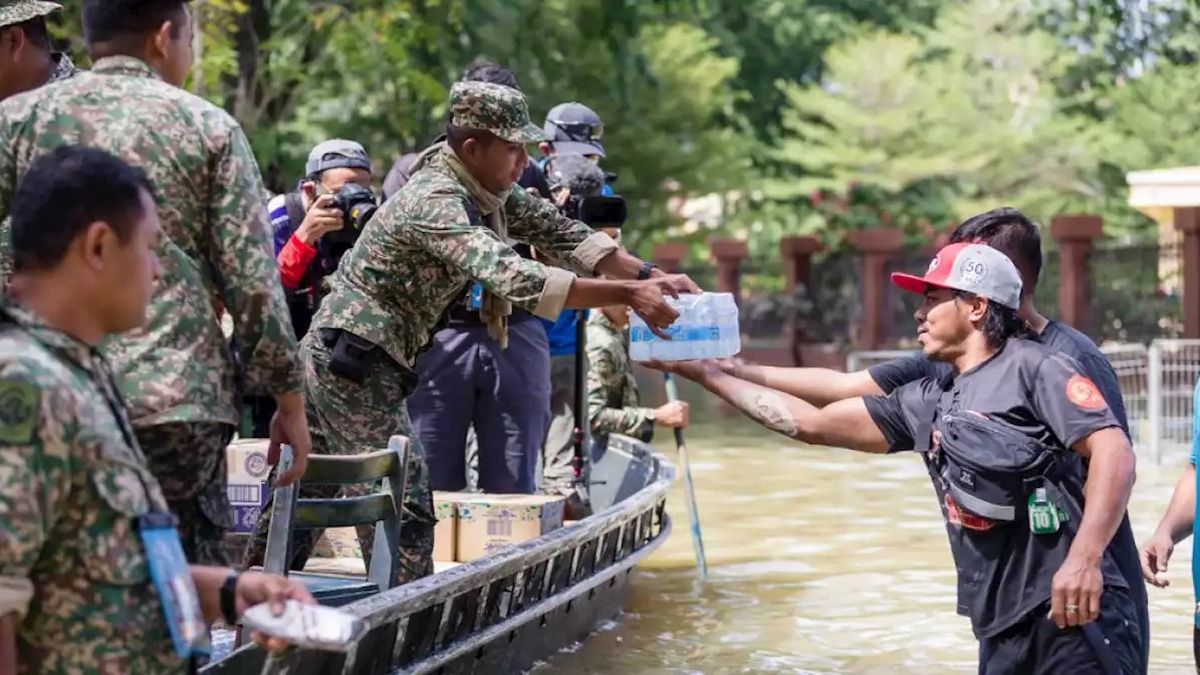At least 375 people were killed and hundreds injured when Typhoon Rai tore through the center and south of this archipelago, destroying wooden houses, uprooting trees and cutting off power supplies on numerous islands.
The United Nations reported “utter devastation” in the areas hardest hit by Rai, which made landfall in the Philippines on Thursday as super certificate, the most powerful to arrive in the country this year.
“I have never in my life encountered a typhoon like this,” said Catholic priest Antonieto Cabajog in Surigao, on the northern tip of the island of Mindanao.
“To say super is an understatement,” he added to a church-run news agency.
More than 400,000 people were housed in evacuation centers or with relatives, said the national disaster agency, after their houses were damaged or destroyed by the cyclone.
One of the most destroyed islands was Bohol, known for its beaches, its “chocolate hills” and its tiny tarsier primates.
At least 96 people died there, said Arthur Yap, the governor of the island, where a state of calamity was declared.
The governor assured that the province ran out of money and asked President Rodrigo Duterte for help. “If you don’t send money to buy food, send soldiers and police because there will be looting here,” he said in an interview on DZBB radio.
There was also widespread destruction on the islands of Siargao, Dinagat and Mindanao, which received the worst of the storm when it erupted with winds of up to 195 kilometers per hour.
On the neighboring island of Negros, 23-year-old Carl Arapoc told AFP that his city is without electricity and that his family uses driftwood for cooking.
“A gallon of water cost 25 pesos (50 cents), now it is 50 pesos,” he claimed.
Thousands of military, police and coast guards were deployed to deliver food, clean water and medical supplies to survivors, who are struggling to find basic goods.
“I have ordered (the army) to deploy all available resources – ships, boats, planes, trucks – to bring goods to the affected areas,” Defense Secretary Delfin Lorenzana said Monday.
Heavy machinery such as excavators or power shovels were also brought in to clear the roads.
The Red Cross is also sending supplies to the islands of Siargao and Bohol, two tourist destinations that are still limping due to the disappearance of visitors caused by Covid-19.
The organization requested $ 22 million to finance the emergency action. The UK offered a million dollars for this effort.
Other non-governmental organizations are also requesting donations.
In Palawan, the last island hit before the typhoon left the country, farmers and fishermen lost their livelihoods, said Catholic priest Eugene Elivera in the provincial capital Puerto Princesa.
Many on that island “never” experienced such a severe storm. “The challenge now is how to start over,” he said.
Rai hit the Philippines late, where the typhoon season typically lasts from July to October.
Scientists warn that these storms are becoming more powerful and getting stronger faster due to global warming brought on by climate change.
The Philippines, considered one of the most vulnerable countries to this phenomenon, usually receives about 20 typhoons each year.
In 2013, Typhoon Haiyan left more than 7,300 people dead or missing, the most powerful storm ever to reach this country.
Source From: Ambito
David William is a talented author who has made a name for himself in the world of writing. He is a professional author who writes on a wide range of topics, from general interest to opinion news. David is currently working as a writer at 24 hours worlds where he brings his unique perspective and in-depth research to his articles, making them both informative and engaging.




